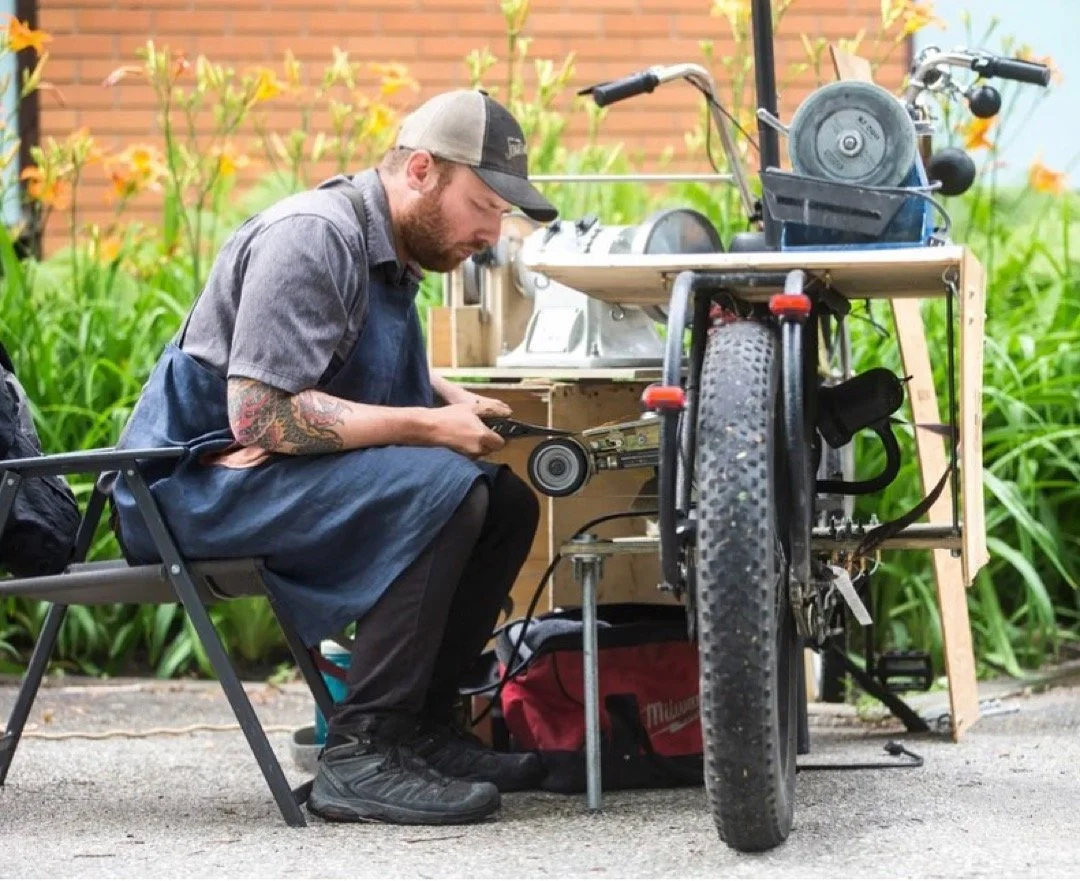present
Bret is the maker behind Cooking Implements.
He crafts kitchen tools that draw on his skills in wood, metal, and stone—objects designed for daily use and built to be cherished for generations. Many pieces are shaped from recycled and salvaged materials: Emily’s old cutting board, wood from the window frames of their 100-year-old home, and discarded offcuts that carry stories of their own.
Brutalist in spirit his work embraces honest materials and bold forms. Burnt textures, forge marks, and purposeful geometry reflecting the rugged beauty of the materials themselves.
Bret aims to create objects that are highly functional and unafraid to show that they are handmade. Each batch of knives or utensils offers a chance to improve a detail, refine a process, or push a technique further. This incremental, relentless pursuit of improvement guides his work every day.
past
Before knives Bret studied and worked in architecture. While others thrived in the conceptual and artistic realm, Bret always gravitated toward the practical: how things work, how they’re built, and how form follows function. It may not have been the education or career Bret expected, but it taught him one lesson he now consider foundational:
design is iterative.
When an injury abruptly ended his career in architecture he found comfort in cooking. That curiosity slowly grew into a craft, and with encouragement from my partner Emily, he began sharpening knives at the Wolseley Farmers Market with his first venture, Market Sharpening Company.
Although the path he may have taken wasn’t exactly straight or apparent, Bret feels he is doing exactly what he is meant to and could not be more content.


